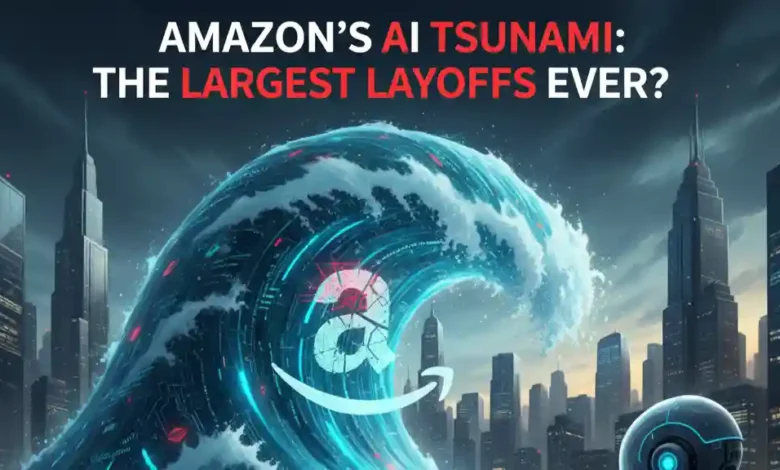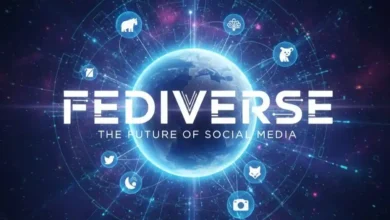The Looming Layoffs by Amazon: A Tsunami of Disruption or a Strategic Rebalance?

The digital titan Amazon, a company synonymous with relentless growth and innovation, is once again poised to embark on a significant round of layoffs. Whispers from within the corporate corridors and industry reports suggest this could be the most extensive workforce reduction in the company’s history, sending ripples of concern through the global job market and igniting a crucial conversation about the future of work. What does this mean for American jobs, the intricate corporate landscape, and the increasingly dominant roles of AI and automation?
The Unfolding Narrative: Scale and Scope of the Cuts
While official numbers are yet to be fully disclosed, the sheer scale of the rumored layoffs points to a fundamental strategic shift within Amazon. Previous rounds, though impactful, often targeted specific departments or areas of perceived inefficiency. This time, the breadth of the cuts is anticipated to be far wider, potentially touching various divisions from retail and logistics to cloud computing (AWS) and even experimental ventures.
The immediate impact on the American job market could be substantial. Amazon, a major employer across countless states, has been a significant source of both white-collar and blue-collar jobs. A large-scale reduction will undoubtedly lead to increased unemployment in affected regions, placing additional strain on local economies already grappling with inflationary pressures and economic uncertainties. The psychological impact on the remaining Amazon employees, as well as those in related industries, cannot be overstated.
Beyond Amazon: A Corporate Contagion?
Amazon’s actions rarely exist in a vacuum. As a bellwether for the tech industry and a major player in the global economy, its decisions often influence other corporations. If Amazon, a company that has consistently prioritized growth and expansion, feels compelled to make such drastic cuts, it could signal a broader trend. Other companies facing similar economic headwinds, supply chain disruptions, or shifting consumer demands might follow suit, leading to a wider corporate contagion of layoffs.
This scenario could fundamentally alter the corporate landscape in America and beyond. It might accelerate the trend of companies prioritizing lean operations, focusing on profitability over sheer market share, and re-evaluating their long-term growth strategies. The era of “growth at all costs” may be giving way to a more cautious, efficiency-driven approach.
The AI and Automation Nexus: A Double-Edged Sword
Perhaps the most critical and thought-provoking aspect of this unfolding situation is the pervasive and undeniable role of Artificial Intelligence and automation. While Amazon’s official statements may cite “economic conditions” or “operational efficiency,” the underlying truth is that AI and automation are increasingly becoming powerful drivers of workforce optimization.
How AI and Automation are Playing a Role:
- Optimized Logistics and Warehousing: Amazon’s fulfillment centers are already heavily automated, with robots handling a vast array of tasks from picking and packing to sorting and transportation. AI algorithms continuously refine these processes, reducing the need for human intervention.
- Customer Service and Support: AI-powered chatbots and virtual assistants are becoming increasingly sophisticated, capable of handling a growing percentage of customer inquiries, order tracking, and issue resolution, thereby reducing the demand for human customer service representatives.
- Data Analysis and Decision Making: AI is instrumental in analyzing vast datasets related to sales trends, inventory management, supply chain optimization, and even marketing strategies. This allows for more precise and often automated decision-making, streamlining operations and potentially reducing human oversight roles.
- Software Development and Cloud Services: Even within its highly skilled tech divisions, AI tools are assisting with code generation, bug detection, and infrastructure management, potentially leading to more efficient software development cycles with smaller teams.
- Content Creation and Curation: AI is being used to generate product descriptions, marketing copy, and even personalize user experiences, impacting roles traditionally held by content creators and merchandisers.
The Future Outcome: A Shifting Paradigm
The long-term outcome of these trends is complex and multifaceted.
- Job Displacement and Reskilling: It’s undeniable that some jobs will be displaced by AI and automation. The challenge lies in proactive reskilling and upskilling initiatives to prepare the workforce for new roles that emerge alongside these technologies.
- Emergence of New Jobs: AI and automation will also create new jobs, particularly in areas like AI development, ethical AI oversight, data science, robot maintenance, and human-AI collaboration specialists.
- Increased Productivity and Efficiency: Companies that effectively integrate AI and automation will likely see significant gains in productivity and operational efficiency, potentially leading to lower costs and increased profitability.
- A More Agile Workforce: The corporate world may become even more dynamic, with a greater emphasis on adaptability, continuous learning, and project-based work.
- The Ethical Imperative: The increasing reliance on AI also brings significant ethical considerations, including algorithmic bias, data privacy, and the societal impact of widespread automation. Governments and corporations will face increasing pressure to address these challenges responsibly.
Navigating the AI-Driven Future
Amazon’s looming layoffs serve as a potent reminder of the transformative power of technology and the ever-evolving nature of work. It’s a wake-up call for individuals, corporations, and policymakers alike. Embracing lifelong learning, fostering creativity, and developing uniquely human skills like critical thinking, emotional intelligence, and complex problem-solving will be paramount. For corporations, the challenge lies in leveraging AI and automation for sustainable growth while simultaneously investing in their human capital and fostering a culture of innovation and adaptability.
The future is not just about adapting to AI; it’s about shaping it responsibly to create a more prosperous and equitable world. Amazon’s next chapter, defined by these significant workforce adjustments, will undoubtedly offer a critical case study in this ongoing, global transformation.
Don’t forget to share your thoughts in the comments below! What impact do you foresee from Amazon’s layoffs, and how do you believe AI will reshape the job market in the coming years?
For more Odinozz Tech articles, click here.
Follow Odinozz on social media. Click here.



